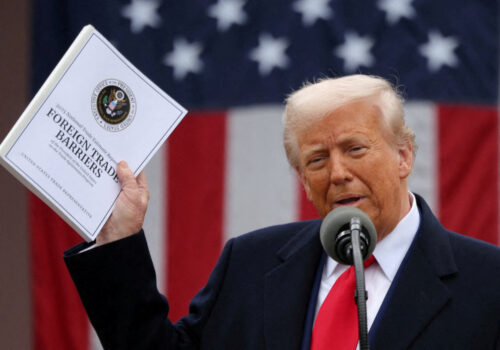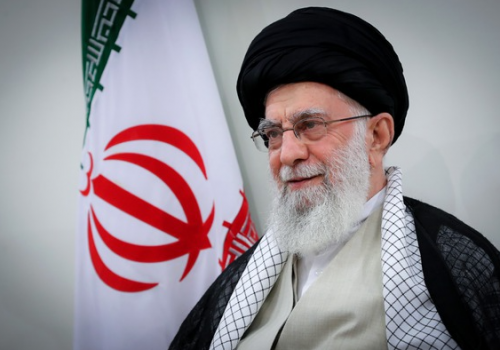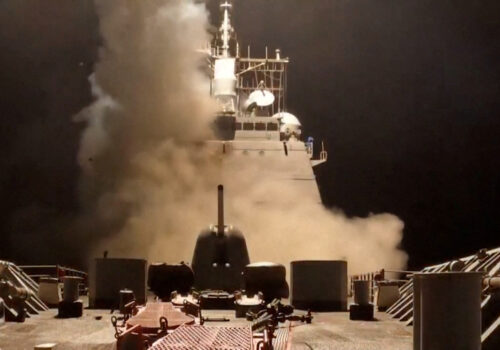Can Donald Trump ‘completely annihilate’ the Houthis in Yemen?
US President Donald Trump says his administration will ensure that Yemen’s Houthi rebels are “completely annihilated”—and he is ramping up Washington’s military might to prove it. Trump has spent the early months of his second term in office escalating US military strikes against the rebel force over their attacks against international shipping in the Red Sea. The renewed US military campaign has so far inflicted significant damage, with at least 57 individuals killed, including Houthi militants and Yemeni civilians. The campaign has also targeted weapons stockpiles, drones, and missile storage facilities in an attempt to degrade the Houthis’ ability to strike Red Sea trade routes.
Paired with recent successive losses of other Iran proxies’ leadership, it may seem that the Houthis’ demise is a foregone conclusion. However, such an assumption underestimates the Houthis’ resilience, strategic adaptability, and deep-rooted influence within Yemen.
The challenges of targeting the rebels require recognition from the Trump administration that a purely military approach will not achieve Washington’s goal of “complete annihilation.”
Washington last week took a rather significant step to expand its anti-Houthi crackdowns beyond military force, announcing sanctions targeting two Russia-based Afghan brothers who assisted Sa’id al-Jamal in orchestrating shipments of stolen Ukrainian grain from Crimea to Yemen. However, the Trump administration’s Houthi strategy will require a more nuanced approach that deepens these non-military components.
The Trump administration should employ a multi-pronged strategy, combining increased intelligence operations on the ground, intensified naval interdictions, and robust regional diplomacy to pressure external actors, particularly Russia and China, from bolstering the group’s capabilities through economic incentives like sanctions relief or threats of increased tariffs.
Houthi resilience
Despite a forceful military intervention from the Saudi-led international coalition against the group since their 2014 takeover of the capital in Sanaa, the Houthis have maintained, and expanded, their control in Yemen. The once small rebel group has evolved into a formidable military force, with emerging international support helping to enable their expanding maritime threats.
One of the greatest challenges in eliminating the Houthis lies in neutralizing their leadership, particularly their charismatic leader Abdel Malik al-Houthi, who has played a vital role in the organization since ascending as their leader in 2004.
Unlike other Iran-backed organizations, the Houthis have a dynastic structure and are highly centralized around al-Houthi and his family. The loss of al-Houthi would be a major blow to the organization, especially given that the lack of a clear successor would likely mean the group would need to focus on quelling internal rivalries instead of operations. But taking al-Houthi out will be a tall order.
Gaps in US strategy: hard and soft power tactics
The United States’ ability to track al-Houthi is likely hindered by limited intelligence on the ground in Yemen. This reality was echoed early last year when the US had difficulty assessing the success of its operations and the group’s full arsenal due to a lack of intelligence. Without a reliable presence or informant network, targeting such a well-hidden leader will prove challenging.
Combatting Houthi messaging around the military campaign requires a nuanced approach, too: the rebels have leveraged the damage to vital infrastructure and civilian casualties from the airstrikes for their own propaganda.
Finally, to keep the Houthis from popping up again, the United States would have to sever the group’s means of resupplying, especially from its international partners. Efforts to cut off weapons deliveries from the Houthis’ primary backers, Tehran, have been inconsistent. Due to factors like shifting regional priorities and a desire to avoid escalation with Iran, US naval efforts to seize Iranian weapons shipments to the group have ebbed and flowed in recent years.
SIGN UP FOR THIS WEEK IN THE MIDEAST NEWSLETTER
At the same time, Iranian efforts to evade detection through tactics like using decoy boats, transferring arms while at sea, and disguising shipments as fishing boats or hiding them on civilian cargo ships also make interception more difficult. In fact, only an estimated 20 Iranian smuggling vessels were intercepted between 2015 and 2024.
During that time, the Houthis announced several concerning new technologies that appeared to be at least partially of Iranian origin, including a missile they claim can reach hypersonic speeds and a number of attack drones.
In order to sustainably cut off Iranian shipments, the United States will need to increase its naval patrols in the Red Sea and Gulf of Aden while also working to collaborate with Gulf allies to choke off smuggling routes and equip the Yemeni Coast Guard with advanced radar technologies and patrol boats that would allow them to be more effective in the long term.
Evolving landscape
Even if the US were able to cut off Iran’s shipments to the rebel group, the Houthis are seeking to diversify their partners beyond Iran and its network of degraded allies and proxies in the region.
For instance, reports from August indicate that Russian military intelligence officers are now operating in Houthi-controlled areas, providing the group with important technical assistance. There are also allegations of a ten-million-dollar Russian small arms sale to the Houthis, and credible claims that Moscow provided the group with targeting data for their maritime operations and is considering selling the group advanced anti-ship missiles.
Expanding ties between the Houthis and Beijing could also allow them to reconstitute. For instance, US intelligence sources claim that China is providing the rebels with advanced components and guidance equipment for their weapons in exchange for immunity for Chinese-flagged ships operating in the Red Sea.
Given the Houthis’ demonstrable resilience, this requires expanding intelligence-sharing agreements with regional allies, deploying advanced surveillance technologies to track illicit arms shipments, and working closely with Gulf partners to enhance maritime security.
Washington must also prioritize strengthening the internationally recognized Yemeni government, also known as the Presidential Leadership Council (PLC), both militarily and through projects that would improve its governance and economic stability. These efforts could include securing partnerships to revitalize Yemen’s oil and gas production and distribution, as well as technical expertise to improve the PLC’s fiscal management and public sector accountability. This, coupled with security training for PLC-affiliated forces like the Yemeni coast guard, would help the PLC establish a credible alternative to Houthi rule while also fostering local governance structures and tribal alliances that can erode the Houthis’ support base from within.
While military action can weaken the Yemeni rebels in the short term, effectively degrading and eventually eliminating the group will require the PLC to govern effectively, regain legitimacy, and offer a viable alternative for Yemenis currently under Houthi control. The Trump administration must keep these ends in mind as it formulates its Houthi strategy.
Emily Milliken is the associate director at the Atlantic Council’s N7 Initiative.
Further reading
Thu, Apr 3, 2025
Experts React: No MENA ally or adversary unscathed by Trump tariffs
MENASource By
A “Liberation Day” for the White House, an upset for global markets. President Donald Trump on Wednesday made good on a campaign promise, slapping tariffs spanning between 10 percent and 50 percent on countries across the globe. Almost no ally or adversary has been left unscathed in the sweeping move, and the Middle East and […]
Tue, Mar 25, 2025
After proxies and nuclear program threats, Iran may turn to terror abroad
MENASource By Alex Plitsas
Iran could turn to transnational terrorism as threats mount of Israeli strike on Tehran’s nuclear facilities, after a weakening of its numerous proxies since the Gaza war.
Wed, Mar 19, 2025
Trump’s military cudgel in Yemen will not achieve US regional objectives
MENASource By
Donald Trump risks falling into US pattern of short-sighted military action at the expense of constructing a sustainable plan for Yemen.
Image: US President Donald Trump points as he speaks at Mar-a-Lago in Palm Beach, Florida, U.S., February 18, 2025. REUTERS/Kevin Lamarque



